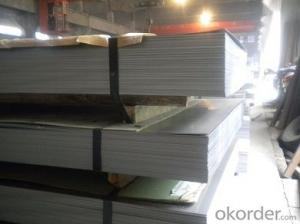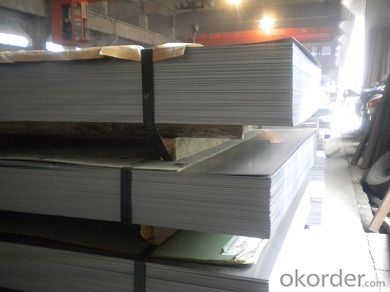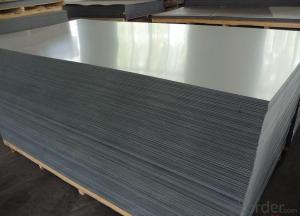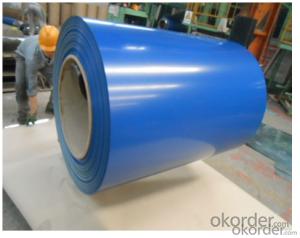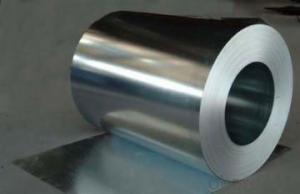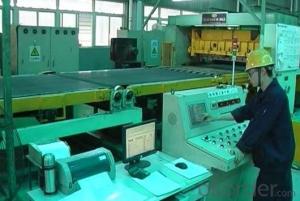GALVANISED Steel Sheet
- Loading Port:
- China Main Port
- Payment Terms:
- TT OR LC
- Min Order Qty:
- -
- Supply Capability:
- -
OKorder Service Pledge
OKorder Financial Service
You Might Also Like
Product Description:
Product Description:
Hot Dipped Galvanized Steel Coil
Hot-dip galvanized steel coils are available with a pure zinc coating through the hot-dip galvanizing process. It offers the economy, strength and formability of steel combined with the corrosion resistance of zinc. The hot-dip process is the process by which steel gets coated in layers of zinc to protect against rust. It is especially useful for countless outdoor and industrial applications.
Product Description Of Hot Dipped Galvanized Steel Coil
Thickness | 0.13mm-0.7mm |
Width | 600mm-1250mm |
Zinc Coating | 30-200g/m2 |
Internal Diameter | 508mm/610mm |
Coil Weight | 3-12MT |
Quality | commercial and structural quality |
Surface Treatment | regular & minimum spangle, zero spangle, oiled & dry, chromated , non-skin pass , skin pass |
Standard | JIS G 3302, ASTM A 653M, EN 10327 |
Steel Grade | SGCC, CS, FS, SS, LFQ, DX51D+Z , S280GD |
Technical Data Of Hot Dipped Galvanized Steel Coil
Chemical Composition | C | Si | Mn | P | S |
0.04-0.06% | 0.01-0.03% | 0.18-0.22% | 0.014-0.016% | 0.006%-0.009% |
Yield Strength | (Mpa) 280-320 |
Tensile Strength | (Mpa) 340-390 |
Elongation | 20%-30% |
Out-of-square | not exceed 1% Flatness |
Bow | 15mmmax |
Edge Wave | 9mmmax |
Centre Buckle | 8mmmax |
Bending At 180 Degree | No crack, purling and fraction |
Application Of Hot Dipped Galvanized Steel Coil
It can be widely used in transportation, light industry, civil usage and farming. It is also the perfect building material in construction for making roofing tile, steel profiles for wall partition, T-bar, studs, fireproof door, air conditioning duct and home appliance.
- Q: Iron too heavy for Ulysses but if there was any iron used id imagine it was steel. Can steel go deeper into sun than iron? Compare two bolts.. 1steel 1iron..is there a difference to what the steel can do?
- Steel is usually stronger than iron. But steel is, by definition, an alloy of iron and one or more other materials. There are thousands of different steel alloys. Be more specific.
- Q: How do steel coils contribute to the renewable energy equipment industry?
- Steel coils contribute to the renewable energy equipment industry by playing a crucial role in the manufacturing of various renewable energy components. They are used to create structural frames, support structures, and brackets for wind turbines, solar panels, and other renewable energy systems. Additionally, steel coils are essential in the production of electrical transformers and transmission lines, which are integral to the distribution of renewable energy. Overall, steel coils provide the strength, stability, and durability required for the efficient and long-lasting operation of renewable energy equipment.
- Q: How can I judge the quality of steel?
- Various ways: Carry out mechanical testing on it to see how strong it is. eg. Tensile testing, hardness testing, impact testing. Examine a cleaned up sample on the steel under a microscope to see what the steel grain structure is like and what condition it is in (hardened etc.) Or the easiest way is to ask the supplier what it is and then find a specification sheet giving you all the above information.
- Q: i was giving this old knive. the knife part is stainless steel and has a couple rust spots but im not sure that the handle is (i think stainless) but it has this un smooth surface i dont think its rust because its not brown. would rubbing alcohol help clean it?
- You can also try Barkeepers Friend.
- Q: What are the surface treatments for steel coils?
- There are several surface treatments available for steel coils, each serving a specific purpose and offering unique benefits. Some common surface treatments for steel coils include: 1. Hot-dip galvanizing: This process involves immersing the steel coil in a bath of molten zinc, resulting in a protective layer of zinc coating on the surface. Galvanizing provides excellent corrosion resistance, making the steel coil suitable for outdoor applications in harsh environments. 2. Electro-galvanizing: This method uses an electrolytic process to deposit a thin layer of zinc onto the steel coil's surface. Electro-galvanizing provides good corrosion resistance, but the coating is generally thinner compared to hot-dip galvanizing. 3. Pre-painting or pre-coating: Steel coils can be coated with paints or other coatings before being formed into final products. This surface treatment enhances the coil's aesthetic appeal while offering protection against corrosion, weathering, and other environmental factors. 4. Pickling and oiling: This surface treatment involves removing oxides and scale from the steel coil's surface by immersing it in an acid solution. After pickling, the coil is typically coated with oil to prevent rust formation during storage and transportation. 5. Phosphating: Phosphating is a chemical conversion coating process that forms a layer of phosphate on the steel coil's surface. This treatment improves the adhesion of subsequent coatings, such as paints or primers, while also providing some corrosion resistance. 6. Organic coatings: Steel coils can be coated with various organic materials, such as epoxy, polyester, or polyurethane, to enhance their corrosion resistance and aesthetic appearance. These coatings offer a wide range of colors, textures, and finishes, making them suitable for diverse applications. It is worth noting that the choice of surface treatment for steel coils depends on the intended application, environmental conditions, and desired appearance. Manufacturers and end-users must carefully consider these factors to select the most appropriate surface treatment for their specific needs.
- Q: I Don't have a Oxy act. torch but can Get a Propane one. The finished part(s) are .375 x .550 x .185
- *Hardening: okorder /... AISI 12L14 : Category :Steel Class :Carbon steel Type :Standard resulfurized and rephosphorized Common Names :Lead steel Designations: Germany: DIN 1.0718 Italy: UNI 9 SMnPb 23 Japan: JIS SUM 22 L , JIS SUM 24 L Sweden: SS 1914 United States: ASTM A108 , ASTM A29 , SAE J403 , SAE J412 , SAE J414 , UNS G12144 Composition : Element / Weight % C / 0.15 (max) Mn / 0.85-1.15 P / 0.04-0.09 S / 0.26-0.35 Pb / 0.15-0.35 Mechanical Properties : Properties / Conditions / T (°C) /Treatment Density (×1000 kg/m3) 7.7-8.03 / 25 Poisson's Ratio 0.27-0.30 /25 Elastic Modulus (GPa) 190-210 / 25 Tensile Strength (Mpa) 540 / 25 /cold drawn (round bar (19-38 mm)) Yield Strength (Mpa) /415 Elongation (%) /10 Reduction in Area (%) /35 Hardness (HB) 163 /25 /cold drawn (round bar (19-38 mm)) *Rod- 12L14 Case Hardened to Rockwell C 58-62 Case Depth .060 Sleeve - 12L14 Case Hardened to Rockwell C 58-62 Case Depth .060 Blade - 12L14 Case Hardened to Rockwell C 58-62 Case Depth .030 Quantity 5000 Rods: Weight per piece .8 ounce (Total 250 pounds) 5000 Sleeves: Weight per piece 1.8 ounce (Total 563 Pounds) 5000 Blades: Weight per piece .3 ounce (94 pounds) Total weight of RFQ 907 pounds 12L14 Steel.
- Q: How are steel coils used in the production of containers?
- Steel coils are used in the production of containers as they are the primary material for manufacturing container bodies. These coils are shaped and welded into the desired container shape, providing strength and durability to the final product.
- Q: Are steel coils affected by temperature changes?
- Yes, steel coils are affected by temperature changes. Steel is a metallic material that expands when heated and contracts when cooled. Temperature fluctuations can cause steel coils to expand or contract, which may impact their dimensions, mechanical properties, and overall performance. It is important to consider and manage temperature changes to ensure the proper functioning and durability of steel coils.
- Q: Why are steel saucepans and tea kettles covered with copper on the outside and the bottom? what r the goals of having high-quality pans that are thick and tea kettles that are thin walled?
- The issue is heat conduction. Copper trasferrs heat rapidly and therefore ensures uniform heat around the base or sides of teh pot. The thick walls can be two different purposes. Sometimes the steel is made in layers for the purpose of providing insulation. If a pot insulates heat then the heat will transfer in a steady manner and the need for constant fuel heat is reduced. Thus, if I want to simmer and can store some of the heat in the pot itself then I know it will transfer slowly because it has to go through the layers first. Secondly, the layers will transfer heat between them allowing for uniform heating and this avoids hot spots. Wash you pots with an acid. Lemon will clean copper very nicely. If you have to scrub then heat gently and use salt or baking soda as an abrasive. With a tea kettle you do not care about heat conduction past the point of the boil. when the boil arrives the job is done.
- Q: what do we use steel for and whyand why do we use brass for instrumentsplz help its homework and i cant find the answer anywhere : (
- Brass and steel are type of metals that mostly use for moist area and also have luxury used cause of ability of shine .Steel definitely is for anti oxide ,mostly use in area that food and liquid such as acid ,milk ,soda,water are in contact .Brass most use for electric parts and decoration for ability of conductivity and shin .
Send your message to us
GALVANISED Steel Sheet
- Loading Port:
- China Main Port
- Payment Terms:
- TT OR LC
- Min Order Qty:
- -
- Supply Capability:
- -
OKorder Service Pledge
OKorder Financial Service
Similar products
Hot products
Hot Searches
Related keywords
